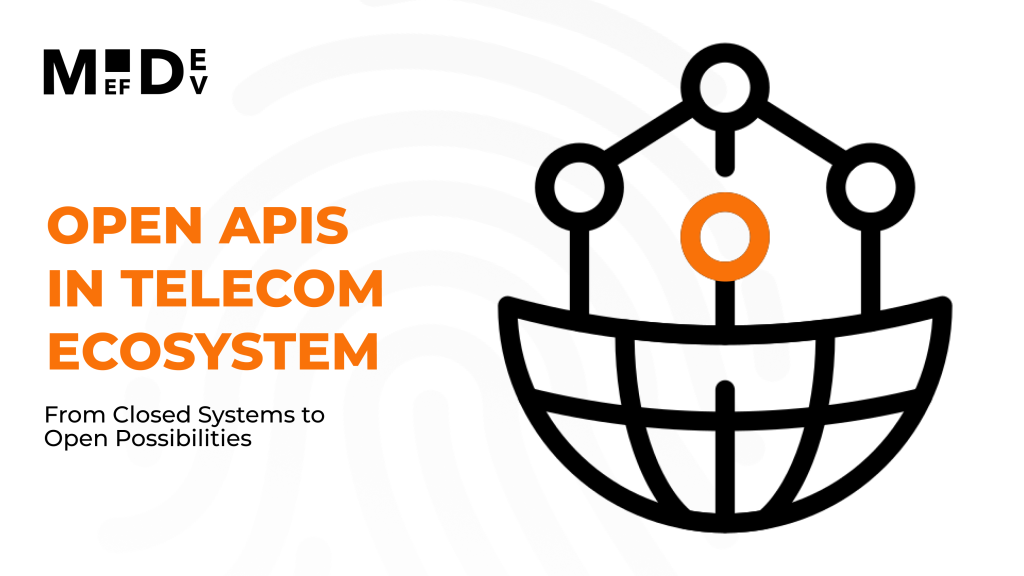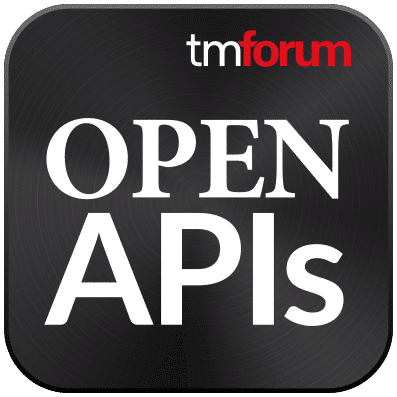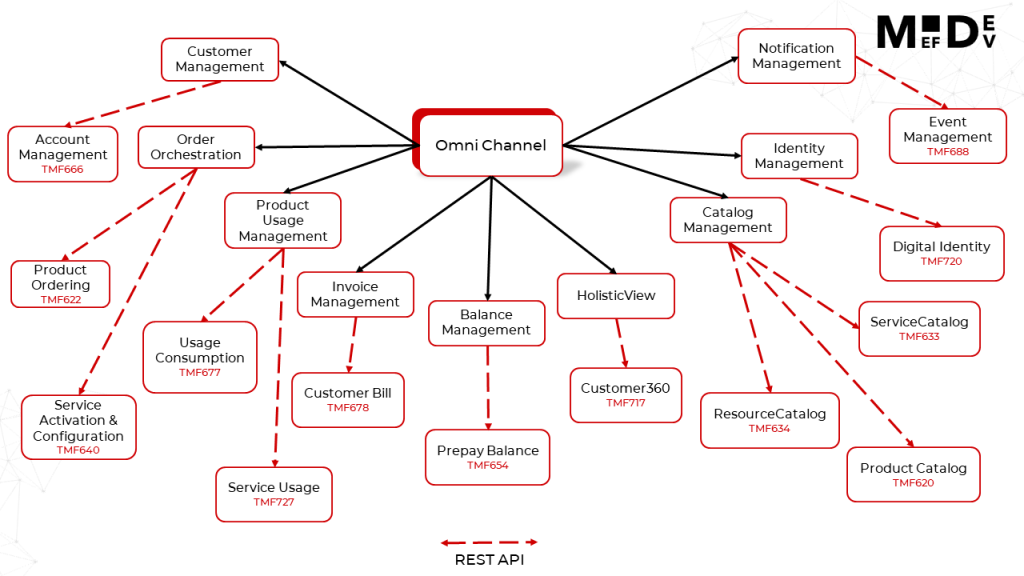
Overview
In the ever-evolving landscape of telecommunications, the quest for seamless and exceptional customer experiences has become a driving force for innovation. In essence, open APIs hold the potential to foster the development of innovative products and services catering to a broader user base. To fully realize this potential, it becomes crucial to consider not only personal data but also ancillary datasets and privacy policies. While presenting an opportunity to revolutionize markets, the evolution of both APIs and the associated services should be accompanied by a thorough assessment of their implications on individuals’ digital rights. This evaluation encompasses the incorporation of design patterns facilitating a genuine comprehension of data processes, the implementation of clear and understandable accountability and transparency mechanisms, a general commitment to the well-being of end-users, and fostering a more informed public discourse on data collection within the telecommunications sector.
Open APIs: The Foundation
The increasing demand for smooth and personalized interactions from consumers has elevated the significance of Customer Experience (CX) in shaping loyalty and acquisition. The telecommunications sector, known for its fierce competition and constant technological advancements, understands the importance of offering an outstanding CX as a key strategic element. A favorable CX not only cultivates customer loyalty but also functions as a potent marketing tool, generating positive word-of-mouth and drawing in new subscribers. In the context of these evolving expectations, subscribers are no longer satisfied with mere transactional exchanges; they now expect seamless and tailored zero-touch experiences that align with their individual preferences.

The pivotal role of standardized open APIs in fostering a customer-centric approach can’t be underestimated since they play a crucial role in the telecom world by facilitating interoperability, promoting innovation, and enhancing collaboration among different components and systems within the telecommunications ecosystem.
Let’s take a closer look at some key aspects of the role of standardized open APIs in the telecom industry:
Interoperability. Standardized open APIs enable different telecom systems and devices to work together seamlessly. By adhering to common standards, telecom operators, equipment manufacturers, and service providers can ensure that their products and services can communicate effectively, regardless of the vendor or technology used.
Facilitating innovation. Open APIs provide a standardized and accessible way for third-party developers to interact with telecom networks and services. This promotes innovation by allowing developers to create new applications, services, and solutions that can leverage telecom infrastructure. It encourages the development of a diverse range of applications beyond what the original telecom providers may have envisioned.
Accelerating Time-to-Market. Standardized open APIs streamline the development process by providing a common framework for integration. Telecom companies can bring new services and features to market more quickly and efficiently, as they don’t need to build custom integrations for each new technology or vendor. This can result in cost savings and a faster response to market demands.
Enabling ecosystem collaboration. Open APIs foster collaboration within the telecom ecosystem. Telecom operators can work with third-party developers, device manufacturers, and other stakeholders to create a more vibrant and dynamic ecosystem. This collaboration can lead to the development of innovative services, improved user experiences, and increased customer satisfaction.
Enhancing service quality and user experience. Through standardized open APIs, telecom operators can integrate various components seamlessly, leading to improved service quality and a better user experience. This can include features such as smoother handovers between networks, enhanced roaming capabilities, and the ability to offer a broader range of services.
Cost reduction. Standardized open APIs can contribute to cost reduction by avoiding the need for custom integrations and reducing development and maintenance efforts. This is particularly important in an industry where rapid technological advancements and evolving standards can lead to frequent updates and changes.
Compliance with legal regulations. Open APIs that adhere to industry standards can help telecom companies comply with regulatory requirements. By following established guidelines and standards, operators can ensure that their systems meet regulatory specifications, promoting a more transparent and accountable telecom environment.
Solution at a Glance

In the world of telecom, the relationship between customers and service providers is made possible by two main areas: what we’ll call the customer’s space and the provider’s space. At the center of it all is a key node – the Omnichannel. Exploring this connection reveals other important channels within the provider’s space, such as Customer Management, Order Orchestration, Keeping Track of Usage, Invoicing, Balance and Catalog Management, etc.
The customer’s world, anchored by the Omnichannel, is where the telecom journey kicks off. This single point acts as a doorway to services, seamlessly reaching into the provider’s space. This is what moves through different channels, each doing a specific job in making the customer’s telecom experience happen.
Specializing in providing comprehensive billing systems and digital transformation solutions, the MEF.DEV company stands at the forefront of innovation, addressing the intricate needs of telecom vendors and communication service providers.
At the heart of MEF.DEV’s transformative offerings lies “Open API BSS core”, which is not just a solution but a strategic approach that integrates seamlessly into the telecom ecosystem. At its heart lies the orchestration of essential nodes for communication service providers facilitated by standardized REST APIs.
In the following comprehensive exploration, we delve into the profound significance of using standardized open APIs in the telecommunications ecosystem, emphasizing their practical implementation for enhanced and customer-centric experiences.
The Core of Customer-Centricity

The “Account Management TMF666” API establishes a standardized mechanism for billing and settlement accounts administration. This ensures a seamless process within both B2C and B2B contexts. The API facilitates the creation, modification, and retrieval of account information, operating within the scope of diverse account entities such as FinancialAccount, PartyAccount, BillingAccount, and SettlementAccount.
The minimal implementation exclusively encompasses the BillingAccount entity. This strategic focus streamlines access to all accounts using either the Account internal identifier or the Customer ID. Notably, in creating a BillingAccount from inception, the utilization of Customer entity creation is anticipated, accompanied by external identifiers for future synchronization purposes.
GitHub: https://github.com/mef-dev/bpmn-examples/tree/dev/tmforum-apis/TMF666_Account_Management
Streamlining Product Ordering

The “Product Ordering TMF622” API emerges as a cornerstone in the telecom evolution, providing a standardized mechanism for initiating and tracking product orders. MEF.DEV’s implementation within WideCoup BSS ensures flexibility and efficiency, allowing the creation, modification, and retrieval of product order information. This standardized approach simplifies transactions between customers, service providers, and partners, highlighting the transformative power of open APIs.
In the intricate tapestry of telecom operations, Product Ordering API represents a specific type of order that enables transactions between a customer and a service provider or between a service provider and a partner. The API permits the creation, modification, and retrieval of Product Order information, where Product Orders are intricately associated with Customer parties.
Despite the existence of different Product Order resources in the TM Forum design, the minimal implementation exclusively incorporates the Product Order due to the Online mode of order execution. This strategic alignment underscores the practicality and efficiency gained through the focus on specific functionalities, contributing to a streamlined and agile telecom ecosystem.
GitHub: https://github.com/mef-dev/bpmn-examples/tree/dev/tmforum-apis/TMF622_Product_Ordering
Enabling Service Activation and Configuration
The “Service Activation and Configuration TMF640” API embodies the essence of service lifecycle management. MEF.DEV’s implementation empowers communication service providers to create, modify, and retrieve product order information seamlessly. Despite the diverse activities supported by this API, the focus remains on the business/customer layer, exemplifying how standardized open APIs drive efficiency in delivering ordered services.
This comprehensive API covers a spectrum of activities necessary to support the business/customer layer in delivering ordered services. From creating new services to modifying inflight service creation and overall lifecycle management, the API ensures a holistic approach to service activation and configuration.
Activities such as monitoring long-running service creation processes, creating inactive services, modifying inflight service creation, and canceling inflight service creation are not required for minimal implementation This strategic decision aligns with the need for a seamless and rapid execution model, contributing to the efficiency of the service activation and configuration processes.
Managing Service Usage with Precision

Precision in managing service usage is paramount, and the “Service Usage Management TMF727” API encapsulates this need. It incorporates the ServiceUsage method, offering a standardized mechanism for the management of service usage. This includes the retrieval and export of a collection of service usages. The creation option for service usage is successfully complemented by ETL features, given the diverse Extract, Transform, and Load scenarios.
In this context, a service usage denotes an instance of usage on a Service derived from various Resource usages. These usages can be further employed by Omni-channels or other systems to disseminate Product usage values. Each service usage is characterized by attributes, representing its inherent properties. The ServiceUsage API facilitates the retrieval of a ServiceUsage or a collection of ServiceUsage, contingent on filter criteria.
Furthermore, the ServiceUsageSpecification entity within the BSS Template establishes a standardized mechanism for the management of service usage specifications. This encompasses the handling of custom sets of service usage characteristics. The ServiceUsageSpecification offers a detailed description of a service usage event, capturing attributes of interest to the business.
Similar to ServiceUsage, it is comprised of characteristics that define all attributes known for a specific type of usage. Specifically, the optional for implementation activities are the creation of a ServiceUsage, partial update of a ServiceUsage or a collection of ServiceUsage, creation of a ServiceUsageSpecification, and partial update of a ServiceUsageSpecification or a collection of ServiceUsageSpecification.
This optionality aligns with the online execution model, focusing on the retrieval and export functionalities while reserving specific activities for future scenarios. By navigating this delicate balance, MEF.DEV ensures that the Service Usage Management API remains a robust and efficient tool for managing service usage within the ever-evolving telecom landscape.
GitHub: https://github.com/mef-dev/bpmn-examples/tree/dev/tmforum-apis/TMF727_Service_Usage_Management
Assessing Consumption Levels
The “Usage Consumption Management TMF677” API encompasses the assessment of consumption levels associated with products, services, or resources pertaining to one or more parties. This method facilitates the retrieval of information concerning remaining, global, or utilized bucket values, including instances of exceptional consumption commonly referred to as out-of-bucket consumption. The Usage Consumption API provides the following operations: a listing of existing usage consumption queries based on filter criteria, retrieval of an existing usage consumption query by its identifier, and creation of a new query for usage consumption.
Despite the existence of diverse Usage Consumption API resources within the TM Forum design, the minimal implementation doesn’t require certain activities due to the Online mode of operations execution. These optional activities encompass the deletion of an existing query for usage consumption and notification of events, specifically QueryUsageConsumption creation or removal events.
This strategic approach ensures that the Usage Consumption Management API within WideCoup BSS aligns with the online execution model, focusing on efficient retrieval and creation functionalities while maintaining flexibility for future utilization. As the telecom industry continues to evolve, the ability to assess and manage consumption levels with precision becomes a critical factor in delivering exceptional services to end-users.
GitHub: https://github.com/mef-dev/bpmn-examples/tree/dev/tmforum-apis/TMF677_Usage_Consumption_Management
Revolutionizing Billing and Invoicing

In the realm of billing and invoicing, the “Customer Bill Management TMF678” API emerges as a game-changer. MEF.DEV’s implementation facilitates the identification and retrieval of customer bills, providing a comprehensive view of applied customer billing rates. This standardized approach streamlines the billing process, demonstrating how open APIs can revolutionize rating and billing processes in telecom.
The Customer Bill Management API encompasses business entities integral to Rating and Billing processes, providing operations for the identification and retrieval of details regarding applied customer billing rates for products subscribed by a customer. Typically, these products are rated at varying prices determined by product offering prices, pricing rules, and additional terms and conditions specified by the customer.
The Customer Bill Management REST API facilitates the retrieval of information from one or multiple customer bills (also referred to as invoices) generated for a customer. A customer bill serves as an electronic or paper document produced after the billing process, consolidating and displaying various items (applied customer billing rates generated during the rating and billing processes) to be charged to a customer. It represents the total amount due for all products during the billing period, encompassing critical information such as dates and bill references.
This API model accommodates the requirements for three fundamental billing types: postpaid and prepaid periodical bills, as well as bill operation by request, and bills with scheduled installment payment guidelines. Furthermore, this API allows for the identification and retrieval of details related to bill cycles. By offering standardized operations for the identification and retrieval of customer billing rates, the API ensures that communication service providers can deliver accurate and timely bills to their customers. The flexibility to accommodate different billing types further enhances the adaptability of the solution to diverse business models within the telecom industry.
GitHub: https://github.com/mef-dev/bpmn-examples/tree/dev/tmforum-apis/TMF678_Customer_Bill_Management
Empowering Event Management

The “Event Management TMF688” API is a transformative tool that streamlines event handling and communication within telecommunications networks, enabling Telcos to deliver exceptional service and stay ahead of the competition.
At its core, “Event Management TMF688” supports large-scale distributed publishing and subscription for events generated by various Event Producers and different Event Types. This capability enables telecom companies to create diverse scenarios in event-based architectures, facilitating seamless communication across the network.
The efficient implementation of the “Event Management TMF688” API within the WideCoup Business Support System lies in leveraging established Entities, particularly multi-tread Tasks, the native implementation ensures smooth integration and seamless communication between different components of the telecommunications ecosystem.
From a technical standpoint, the “Event Management TMF688” API offers a comprehensive suite of functionalities. This includes the ability to subscribe to events via different topics, deliver events to consumers using callback API calls, retrieve subscriptions for events, and search for detailed information about events, such as alarms, which are categorized based on predefined values, following industry-standard guidelines. These categories encompass a variety of notification scenarios, including Communications Alarm, Processing Error Alarm, Environmental Alarm, Quality of Service Alarm, Equipment Alarm, Integrity, Physical, and Security violations, and more. Understanding the lifecycle of events is crucial for effective event management, with events transitioning through states such as “raised”, “updated”, and “cleared”.
Conclusion
The orchestrated nodes, powered by REST APIs, exemplify how standardization enhances customer experiences, fosters efficiency, and paves the way for a connected and customer-centric future in telecommunications. In embracing these standardized interfaces, communication service providers can navigate the evolving landscape with agility, ensuring a seamless and delightful journey for their customers.
As the telecom industry evolves, the need for standardized open APIs becomes increasingly apparent. These APIs not only facilitate seamless communication between different nodes within the telecom ecosystem but also drive innovation and efficiency. MEF.DEV’s WideCoup BSS serves as a prime example of how the strategic implementation of standardized open APIs can revolutionize billing systems and digital transformation solutions.
The journey towards a connected and customer-centric future in telecommunications hinges on the strategic adoption and implementation of standardized open APIs. As communication service providers embrace these interfaces, they not only unlock new possibilities for innovation but also ensure that their services remain agile, efficient, and aligned with the evolving needs of their customers.
Resources
BPMN 2.0 standard examples:
- Account Management TMF666 (https://github.com/mef-dev/bpmn-examples/tree/dev/tmforum-apis/TMF666_Account_Management)
- Product Ordering TMF622 (https://github.com/mef-dev/bpmn-examples/tree/dev/tmforum-apis/TMF622_Product_Ordering)
- Service Activation and Configuration TMF640 (https://github.com/mef-dev/bpmn-examples/tree/dev/tmforum-apis/TMF640_Service_Activation_and_Configuration)
- Service Usage Management TMF727 (https://github.com/mef-dev/bpmn-examples/tree/dev/tmforum-apis/TMF727_Service_Usage_Management)
- Usage Consumption Management TMF677 (https://github.com/mef-dev/bpmn-examples/tree/dev/tmforum-apis/TMF677_Usage_Consumption_Management)
- Customer Bill Management TMF678 (https://github.com/mef-dev/bpmn-examples/tree/dev/tmforum-apis/TMF678_Customer_Bill_Management)
Useful Links
- Join the online technical preview of the MEF.DEV platform (https://preview.mef.dev/rflnk/wsvfcV0ECUiTog2b%2Fv2PmCJMkMdhSXKjoyJe5Ziwl6L2%2FsEhxbNHs0%2FK9YZqm%2Bxt)
- Run the MEF.DEV platform in a Docker container (https://github.com/mef-dev/docker)
- Helm chart templates for MEF.DEV apps in Kubernetes (https://github.com/mef-dev/k8s)


